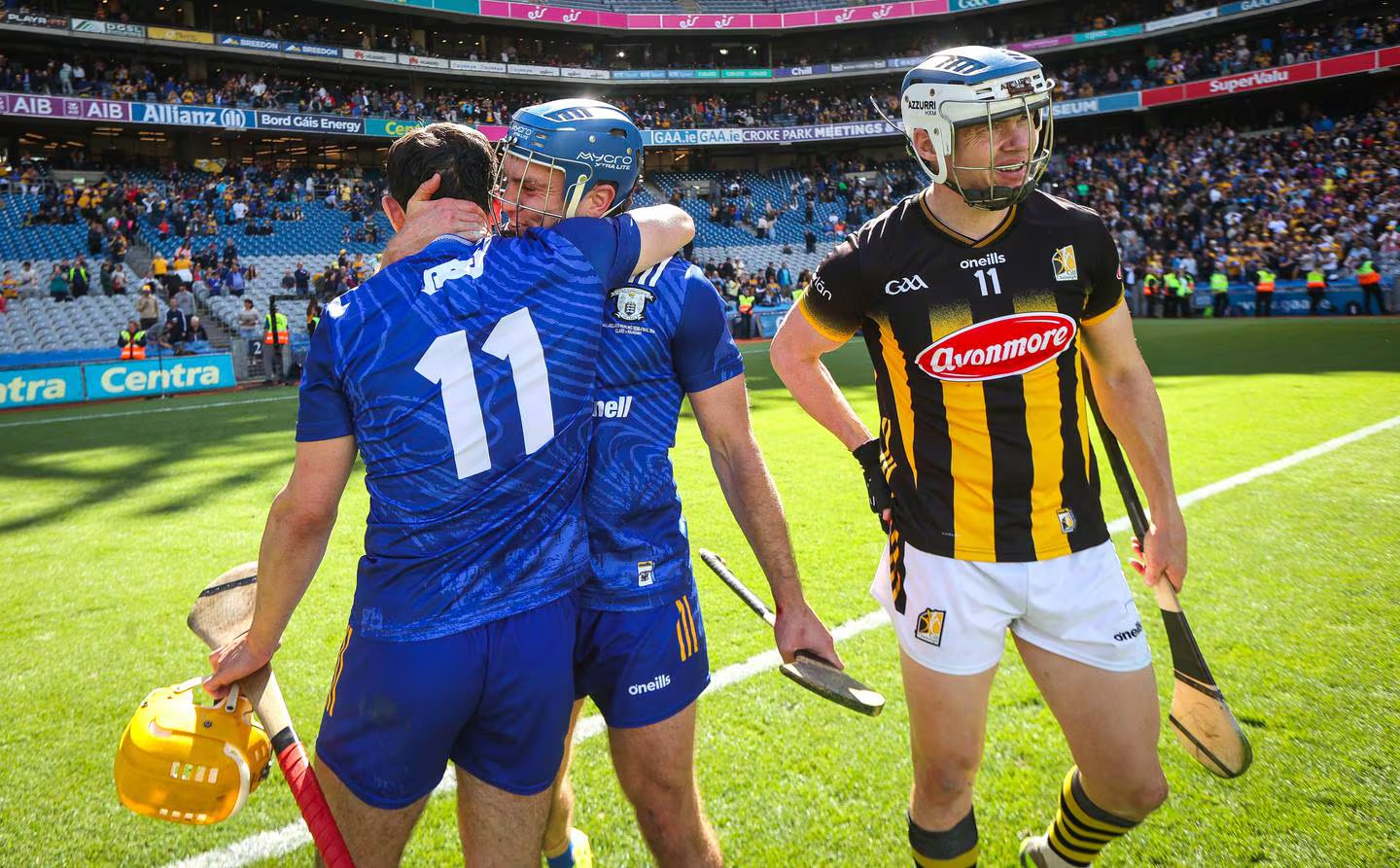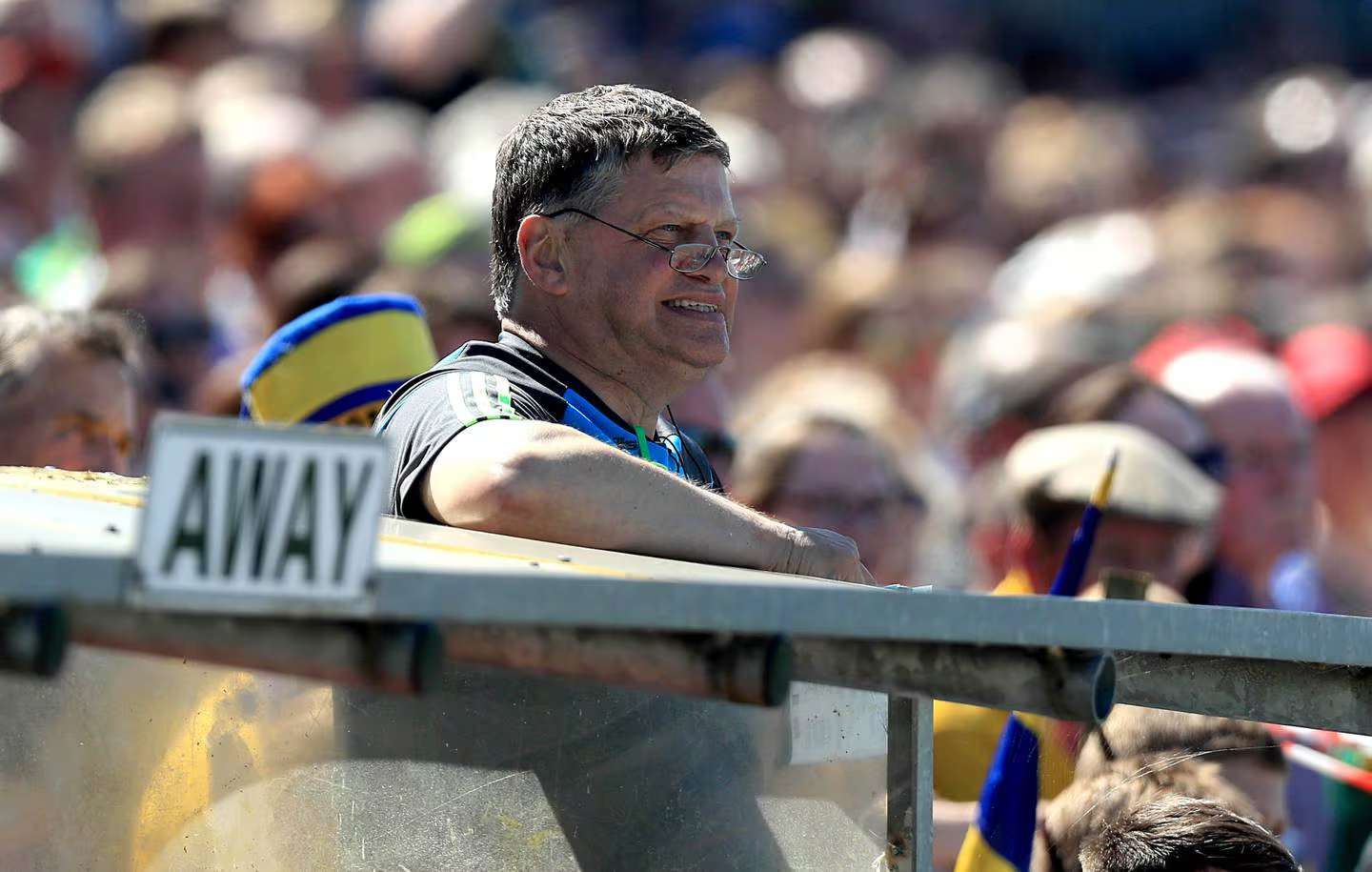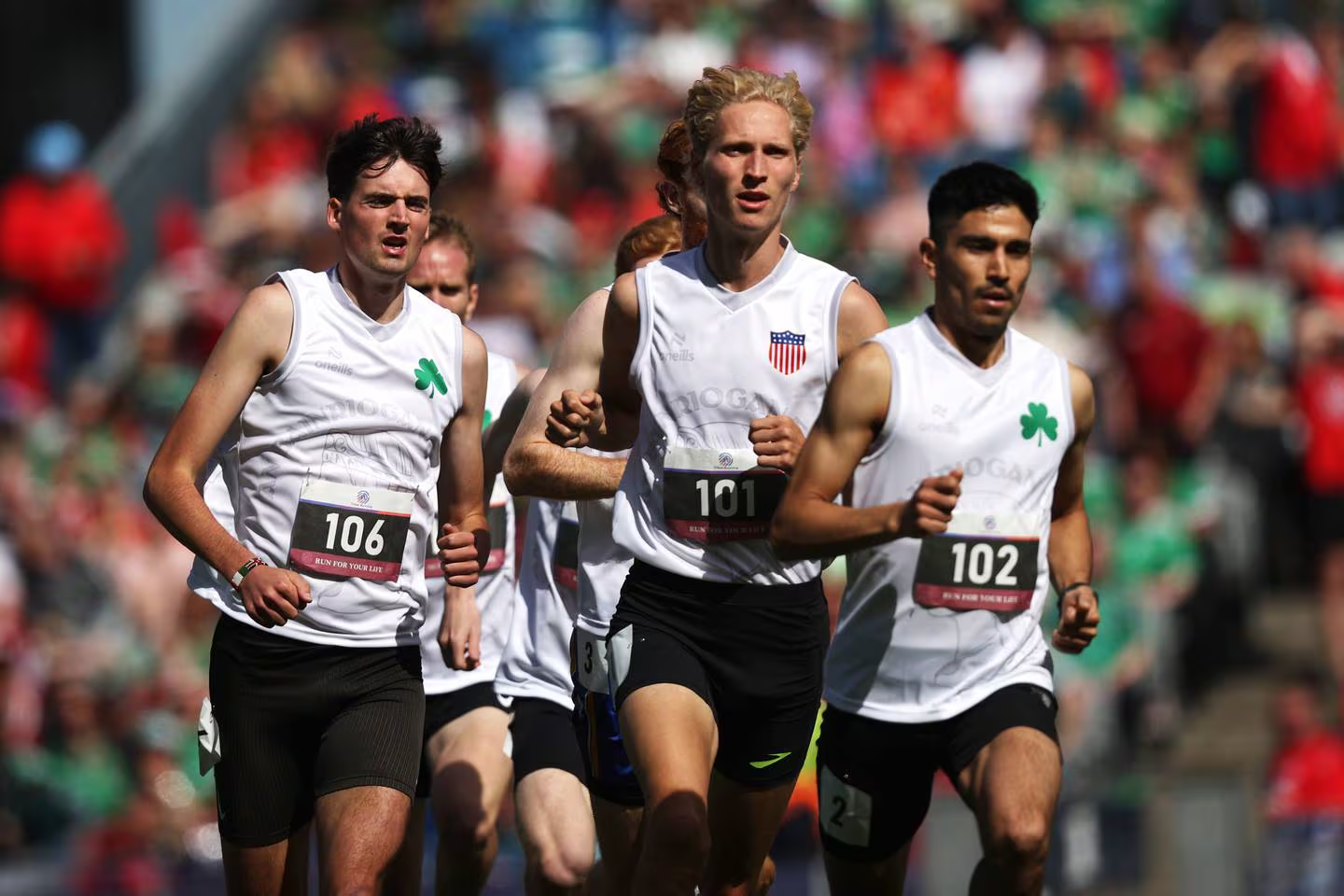Five things we learned from the GAA weekend: Cork’s sheer bolshie bloody-mindedness won the day
Cork impress in what you can measure, and what you can’t
It feels like an act of vandalism to reduce something as visceral as Sunday’s semi-final to a dashboard of numbers but this has been Limerick’s first language for the last six years and to have any chance against them, Limerick’s putative rivals needed their numbers to match up.
On Sunday, Cork created that level playing field. In the key metrics they eye-balled the champions. Defending ferociously from the front has been Limerick’s first principle since 2018 and for years it had been the most damaging omission in Cork’s play. On Sunday both sets of forwards forced 18 turnovers. For Cork, that parity reflected a massive cultural shift. The overall count on turnovers was 29-28 in Cork’s favour.
In his post-match interviews John Kiely always refers to shooting efficiency and he mentioned it again after the semi-final. Their overall efficiency on Sunday was only one percentage point less than Cork’s (59 per cent - 58 per cent) but in shots from open play there was a critical 4 per cent difference (62 per cent - 58 per cent) in Cork’s favour.
Apart from efficiency, the other emphasis in Limerick’s shooting is volume. In Páirc Uí Chaoimh two months ago they had 39 shots, two fewer than Cork. On Sunday they ramped up their shooting to a remarkable 50 shots, but Cork didn’t leave them out of their sight and were only one behind.
In the history of shooting, it was the first time that two teams had dipped under 10 seconds for the 100 metres.
[ Denis Walsh: Brian Hayes is the point of difference Cork needed to halt Limerick’s march ]
There isn’t a number to describe sheer, bolshie, bloody mindedness but Cork’s puck-out strategy was dripping with attitude. They often went long and down the middle, just as they had done two months ago. Limerick weren’t expecting it that night but even stripped of the element of surprise, Cork re-loaded and fired again.
In the second quarter, when Limerick got a run on Cork and out-scored them 0-10 to 0-3, they picked off three points from Cork’s re-starts. Cork’s response after half-time was to double-down on Plan A. It is precisely what Limerick would have done. By the end of the match Cork had harvested nine points from long puck-outs.
For Cork, sheer, bolshie bloody mindedness was the difference. — Denis Walsh
Clare manage to redress history
One of the agonising aspects of Clare hurling in the 1970s was despite the team being good enough to win back-to-back leagues in 1977-1978, both against Kilkenny, they simply couldn’t get past the era’s outstanding All-Ireland three-in-a-row team, Cork, who defeated them in both year’s Munster finals.
The effect of the league was, essentially, to mislead the county. Ger Loughnane – a key player on those Clare teams – as manager always appeared to treat the competition with contempt when they were in their pomp – training right up to knockout matches et cetera.
It was as if was he was punishing the spring competition for misrepresentation.

Clare’s Shane O'Donnell and Mark Rodgers celebrates as Kilkenny’s TJ Reid looks on dejected. Photograph: Ryan Byrne/Inpho
In 1995, however, when the 1990s team was emerging they did get to the league final only to be comfortably beaten by Kilkenny.
Loughnane created a stir afterwards by saying that Clare would win Munster because none of the province’s teams had as good a defence as Kilkenny. Whether conviction or psychology, that’s how it played out to the further point of a first All-Ireland since 1914.
The contemporary league has an ambivalent status. Last year’s final prefigured the Limerick-Kilkenny All-Ireland but the previous season’s Waterford-Cork was entirely lacking in championship significance.
This time around, Clare had lost two straight All-Ireland semi-finals to Kilkenny and appeared to target them in the league, winning narrowly in Ennis and then again in the final in Thurles three months ago.
[ Brian Lohan: ‘Sometimes you just get fed up and it has to stop some time’ ]
Speaking at the weekend, manager Brian Lohan acknowledged the importance of winning a national final against Kilkenny.
“We put a big emphasis on it at the time. We needed to beat Kilkenny, we had lost two in a row to them. They do set the standard. Obviously, Limerick are setting the standard for the last while but Kilkenny traditionally do set the standard.
“If you can beat Kilkenny, whether it’s league or championship, it’s a good sign. And it’s a good sign for us when we did beat them and we were delighted with that. We do see them as standard bearers and when we’re rattling them, we’re happy with that.”
It is the case though that of all the league finals against Kilkenny, it was the one Clare lost that presaged an All-Ireland whereas the ones they won were re-contextualised by Cork. They will hope to redress that in a fortnight. — Seán Moran
John O’Mahony – a man held in esteem by friends and rivals alike
As a kid, my earliest memory of hearing John O’Mahony’s name was in the summer of 1994 when the Leitrim footballers trained in my hometown of Kells, County Meath. Several prominent members of the local GAA club, Gaeil Colmcille, originally hailed from Leitrim and there was an arrangement in place for the Connacht county’s footballers to train midweek in Kells.
It proved to be a summer of summers for Leitrim, with the team winning the Connacht title. On the day of their All-Ireland semi-final against Dublin, we were encouraged to stand with our green and gold flags on the main entry road to Kells and cheer the Leitrim supporters on their way to the capital. Not that we needed much incentive to support anybody against Dublin, truth be told.

Leitrim selector John O'Mahony pictured in 2017. Photograph: Donall Farmer/Inpho
In February of this year, while chatting to John O’Mahony about a different GAA matter, our conversation turned to 1994 and he talked so warmly and fondly about the people who helped and facilitated Leitrim’s training arrangement 30 years ago. That Leitrim 1994 triumph endures as a moment in Irish sporting history, but it is also only one of his many sporting achievements. He had plenty more in politics, too.
But perhaps his greatest achievement was that through it all, the man who became Leitrim manager before any silverware was landed was very much the same man who walked away after leading Galway to two All-Ireland titles. And that’s not even to mention his many years of service to Mayo football – he managed them to the 1989 All-Ireland final, which was their first appearance back on the big stage since 1951. That run instilled belief and lit a spark in Mayo, which has largely endured until the present day.
Through it all, sport and politics, he remained a decent, affable and humble man. Widely respected, the outpouring of messages from across the country – especially from rival counties such as Mayo, Galway and Leitrim – indicate the esteem in which he was held. John O’Mahony, a good man. RIP. — Gordon Manning
Will the Croke Park mile become an annual event?
They say all records are made to be broken, and if the fastest mile time ever run in Croke Park had stood since 1966 for good reason (it hadn’t been raced there since), the opportunity to better it could not have been better staged.
The GAA always had strong ties with athletics going right back to its founding in 1884, and links with several Irish Olympians too, so on Sunday in Croke Park they marked the now centenary of Ireland’s first participation as the then Free State at the Paris Games in 1924: the novel idea was to put on a mile race to see could they improve on the 4:12.1 clocked by my late father Tom, on a sweltering hot Monday in May of 1966, at what was also the last staging of the historic Tailteann Games, once upon a time the biggest sporting event in Ireland.
Peter Byrne, the original doyen of sports writing late of this parish, wrote of that race: “A better approximation of O’Riordan’s figures would be four minutes six seconds, however, for the five-lap grass circuit, coupled with the blazing sun, contrived to put competitors at a distinct disadvantage.”

A view of the Mile Run to commemorate the Tailteann Games Centenary. Photograph: Bryan Keane/Inpho
Conditions for the seven runners on Sunday were ideal, at half-time in Sunday’s epic All-Ireland hurling semi-final between Limerick and Cork, and with most of the 82,300 staying in their seats, the atmosphere was electric as the gun was fired on their five-lap race, the track meticulously measured in advance and quickly marked down with ropes and cones.
The runners of 2024 also had the now mandatory super-spikes on their feet, the Croke Park surface also significantly better than it was in 1966, but still they were made work exceptionally hard to break the 4:12.1.
In the end Luke Hauser broke the tape first in 4:10.39, the two-time US collegiate indoor mile champion in Dublin ahead of Tuesday’s Cork City Sports, with Mayo’s Shane Bracken and Seán Tobin from Tipperary finishing a few strides back in second and third, all three of those running a sub-four mile before.
Tobin afterwards described it as one of the hardest miles he’d ever run, particularly give the tight bends, and given the fact my dad’s time of 4:12.1 from 1966 was also clocked in his first race since running the 5,000m at the Tokyo Olympics in October 1964 (having missed the entire 1965 season with injury), there was clearly some relief too that the record had been broken.
Given the crowd reception and engagement, however, might the GAA now make this an annual record-breaking effort? — Ian O’Riordan
To throw or not to throw, that is the question
Ok, let’s take a deep breath and try to address the handpass conversation that occurred on The Sunday Game on Sunday night.
Donal Óg Cusack went first, suggesting that we should get “top, top players” involved in any decision on the matter, and that we should accept that the handpass have evolved.
Shane Dowling went next and accused referees of guessing. His reasoning was “If you can’t see it, you can’t blow it,” which is comical as it is the 180-degree opposite of what the rulebook actually says, which explicitly says the striking action must be clear.
In fact, referees don’t have to guess – their reaction to finding themselves in a situation where they have to guess, should be to give a free for a foul ball every time. A referee using the rule book would have rightly blown for three thrown balls in the first 20 seconds of Limerick v Cork.
Cusack’s notion that we should get the “top, top players” involved in this decision making is ridiculous. The players should be kept as far away from this decision as possible. The “noise” that Cusack is referring to is coming from the fans of the game and the reason is simple – hurling is an incredibly skilful game, and throwing the ball is not a skill.
Yes, they pundits succeeded in finding a few example of players “handpassing” a ball and being blown incorrectly, but those decisions could only be seen by slowing down the footage and zooming in. Referees don’t have that luxury. So if it looks like a throw and waddles like a throw in real time...
There is a clear binary choice here: we simply decide to allow players to throw the ball - and surely no one wants that - or we switch to the rule brought to congress by Tipperary this year, stating that all handpasses have to be off the hurley. It’s clear, it’s clean, and the referee (and the crowd) can see it. And best of all it is a real skill.
Something has to be done with the current situation. To put it in the starkest way – what is the point of having a rule that is unreffable? — Patrick Nugent

